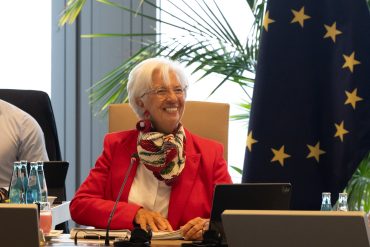
- Interest Rates
ECB Set to Cut Interest Rates as Eurozone Inflation Falls
3 minute read

European Central Bank Prepares First Rate Cut Since 2022 as Regional Price Growth Slows Below 2% Target
Key Facts
- ECB expected to cut interest rates by 0.25%, lowering deposit facility rate to 2%
- Eurozone inflation dropped to 1.9% in May 2025 from 2.2% in April
- Markets pricing in 100% probability of June rate cut with 50% chance of September cut
Introduction
The European Central Bank (ECB) stands ready to implement its eighth interest rate cut in a year, marking a significant shift in monetary policy amid changing economic conditions. According to The Guardian, the anticipated quarter-point reduction will lower the deposit facility rate to 2%, reflecting the ECB’s ongoing commitment to supporting eurozone economic stability.
Key Developments
The ECB’s decision comes as eurozone inflation dipped below the 2% target for the first time since September, reaching 1.9% last month. This decline stems from decreased services inflation, lower energy prices, and reduced core inflation. The current rates stand at 2.25% for the deposit facility, 2.40% for main refinancing, and 2.64% for marginal lending.
Deutsche Bank analysts suggest this easing cycle approaches completion, though continued disinflation could justify a September cut to 1.75%. The eurozone economy shows resilience, with GDP growing 0.3% quarter-on-quarter in early 2025, and Germany expanding by 0.4%.
Market Impact
Financial markets have nearly fully priced in the expected rate cut, with Ronald Temple of Lazard Asset Management describing it as “a done deal.” The decision affects multiple stakeholders: equity markets may rise, bond prices could increase as yields fall, and borrowers may benefit from lower consumer debt and mortgage rates.
The tech sector views this monetary easing favorably regarding capital costs and consumer spending, though strategic flexibility remains crucial given ongoing economic uncertainty.
Strategic Insights
The ECB faces complex challenges balancing short-term and long-term economic outlooks. While near-term inflation might fall below target, several factors could create upward price pressure, including rising government spending, emerging trade barriers, and tight labor markets.
Expert Opinions and Data
Ulrike Kastens, senior economist at DWS, projects cuts in both June and July before a pause, noting that “the air gets thinner from here as inflation moderates and growth rates stabilize.” German bank Helaba analysts anticipate a provisional halt after June’s cut, citing announced expansive fiscal policy as an argument against further easing.
Deutsche Bank emphasizes policy outlook fluidity as the ECB navigates these challenges. Economists expect eurozone growth to increase modestly from 0.8% in 2024 to 1% this year, supported by fiscal stimulus and manufacturing cycle shifts.
Conclusion
The ECB’s rate cut decision represents a careful balance between supporting economic growth and maintaining price stability. With inflation below target and markets anticipating the move, this monetary policy adjustment aims to sustain eurozone economic resilience while managing various economic pressures.








